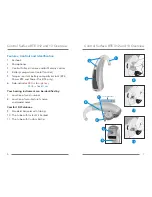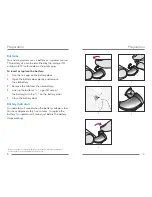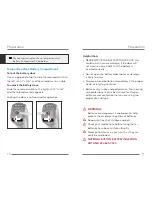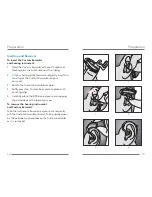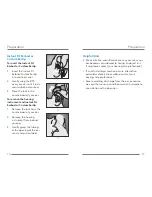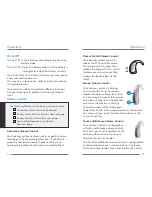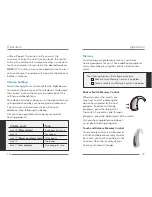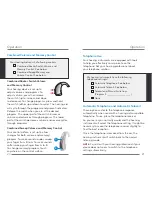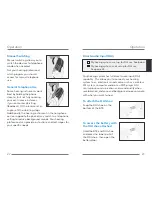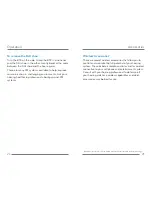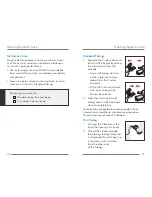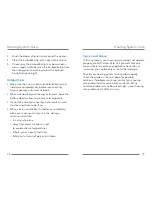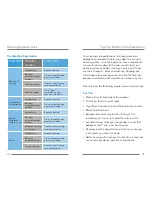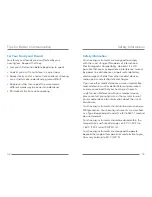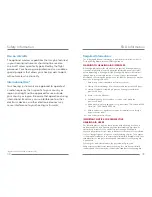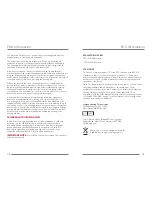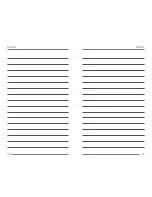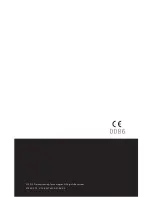
34
35
*Applies to wireless hearing instruments only
FDA Information
Safety Information
Use on Aircrafts
*
The optional wireless capabilities that may be featured
in your hearing instruments should not be used on
an aircraft unless specifically permitted by the flight
personnel. Your hearing care professional can enable a
special program that allows your hearing aids to work
without wireless functionality.
International Use*
Your hearing instruments are approved to operate at
a radio frequency that is specific to your country or
region and might not be approved for use outside
your country or region. Be aware that operation during
international travel may cause interference to other
electronic devices, or other electronic devices may
cause interference to your hearing instruments.
Required Information
The following additional information is provided in compliance with U.S.
Food and Drug Administration (FDA) regulations:
WARNING TO HEARING AID DISPENSERS.
A hearing aid dispenser should advise a prospective hearing aid user to
consult promptly with a licensed physician (preferably an ear specialist)
before dispensing a hearing aid if the hearing aid dispenser determines
through inquiry, actual observation, or review of any other available
information concerning the prospective user, that the prospective user has
any of the following conditions:
i. Visible congenital or traumatic deformity of the ear.
ii. History of active drainage from the ear within the previous 90 days.
iii. History of sudden or rapidly progressive hearing loss within the
previous 90 days.
iv. Acute or chronic dizziness.
v. Unilateral hearing loss of sudden or recent onset within the
previous 90 days.
vi. Audiometric air-bone gap equal to or greater than 15 decibels at 500
Hertz (Hz), 1,000 Hz and 2,000 Hz.
vii. Visible evidence of significant cerumen accumulation or a foreign
body in the ear canal.
viii. Pain or discomfort in the ear.
IMPORTANT NOTICE FOR PROSPECTIVE
HEARING AID USERS.
Good health practice requires that a person with a hearing loss have a
medical evaluation by a licensed physician (preferably a physician who
specializes in diseases of the ear) before purchasing a hearing aid.
Licensed physicians who specialize in diseases of the ear are often referred
to as otolaryngologists, otologists, or otorhynolaringologists. The purpose
of the medical evaluation is to assure that all medically treatable conditions
that may affect hearing are identified and treated before the hearing aid
is purchased.
Following the medical evaluation, the physician will give you a
written statement that states that your hearing loss has been medically
evaluated and that you may be considered a candidate for a hearing aid.

